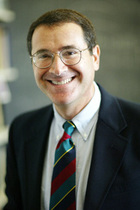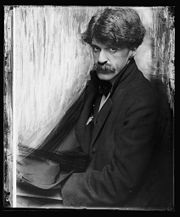Who are the greatest photographers of the 20th Century?
When you hear a question like that, you know that David W. Galenson, a professor of economics at the University of Chicago, is at it again.
 Galenson is the guy who takes a statistical approach to such questions. His new list, just published as a working paper by the National Bureau of Economic Research, provides the answer, based on research that parallels his previous work. In July 2008, he ranked the greatest architects of the 20th Century; in February 2007, he ranked the greatest women artists of the 20th century, and in December 2005, he ranked the greatest artists of the 20th century. All were also published as working papers by NBER.
Galenson is the guy who takes a statistical approach to such questions. His new list, just published as a working paper by the National Bureau of Economic Research, provides the answer, based on research that parallels his previous work. In July 2008, he ranked the greatest architects of the 20th Century; in February 2007, he ranked the greatest women artists of the 20th century, and in December 2005, he ranked the greatest artists of the 20th century. All were also published as working papers by NBER.
He has also created a list of the most important works of the 20th century, which — aside from putting Picasso’s “Les Demoiselles d’Avignon” at the top of the list — elicited mostly guffaws. And he has studied what kinds of artists make their breakthroughs when they are young or when the are old. He has published three books on these subjects.
Galenson bases his “greatest” conclusions on the number of times the work of an artist — or a specific work itself — appears in textbooks. In this case, he took five leading textbooks about photography (named in his appendices), and counted the photographers whose work appeared four or more times in them. Twenty photographers made that list.
Then, he counted the total illustrations of the photographs of each of those twenty artists in “all available textbooks, published in 2000 or later, that surveyed the history of photography throughout the past century.” Sixteen textbooks qualified (also cited).
As it happened, those books reproduced the work of 16 photographers 11 or more times.
 At at the top of the charts, with 32 pictures, came Alfred Stieglitz.
At at the top of the charts, with 32 pictures, came Alfred Stieglitz.
Stieglitz was followed by Walker Evans, with 23; Cindy Sherman, with 22; Man Ray, with 21; and Eugene Atget, with 18.
Galenson says, in conclusion, that his work
supports Siegfried Kracauer’s claim that photography has been the province of two very different, and conflicting, tendencies. Eugene Atget, Alfred Stieglitz, and Walker Evans were experiemental artists who were dedicated to realism, and to making viewers of their work perceive the world around them. In sharp contrast, May Ray and Cindy Sherman are conceptual artists who have consistently created artificial settings for their own self-expression.
Galenson’s next five, by the way, were Dorothea Lange, August Sander, Edward Steichen, Edward Weston, and John Heartfield. Here’s a link to the abstract. (I accessed the whole paper last week, but it was not available when I tried again.)
You may laugh at his work: it does sometimes turn up odd, even funny, results (particularly the greatest works of art, cited here in a 2008 New York Times article). Not this time, though. Sure, he leaves out recent stars like Andreas Gursky, Thomas Struth and Candida Hofer, but they have gained their biggest followings in this century, not the last one.
Besides, his work gets people talking and thinking, maybe even in reverse order.
Photo Credits: Jason Smith, University of Chicago (top); Steiglitz’s 1902 self-portrait, Library of Congress collection (bottom).
